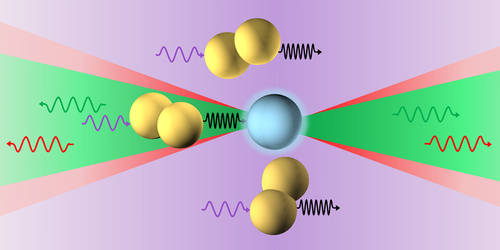An Alternative Way to Make an Air Laser
To remotely sense atmospheric contaminants, scientists can laser excite molecules in a distant air pocket and use the light emitted by the molecules to determine the pocket’s composition. Ideally, the molecules will emit laser light, which can only be transmitted toward or away from the exciting laser. Now Zan Nie of Huazhong University of Science and Technology in China and his collaborators have found a promising way to coax such laser light out of air molecules [1].
One way to achieve so-called air lasing entails using a laser to break either nitrogen or oxygen molecules into their constituent atoms and then using the same laser, or a second one at a different wavelength, to induce the single atoms to lase. Another method targets single argon atoms, obviating the dissociation step. Both approaches exploit the possibility that photons emitted back toward the exciting laser acquire the detectable fingerprints of intervening contaminants on their return trip. But both approaches also have shortcomings: dissociation introduces troublesome and potentially confusing nonlinearities into the signal, and argon makes up only 1% of air, so getting it to lase is hard.
Applying their approach, Nie and his collaborators used an intense ultraviolet laser tuned to emit photons with a wavelength of 261 nm. When three of those photons simultaneously hit a nitrogen molecule, they excited it, and the molecule then decayed by emitting a single photon of the same total energy. That photon’s wavelength, 87 nm, happens to match one of argon’s excited states, which decays by emitting two photons, one with a wavelength of 1409 nm and one at 751 nm. Both photons readily move through air, an advantage for turning the approach into a practical sensor.
–Charles Day
Charles Day is a Senior Editor for Physics Magazine.
References
- Z. Nie et al., “Bidirectional cascaded superfluorescent lasing in air enabled by resonant third harmonic photon exchange from nitrogen to argon,” Phys. Rev. Lett. 133, 063201 (2024).




